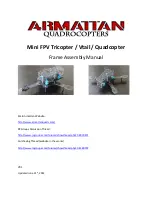
User's Guide ADI-8 DD © RME
9
6. The AES to ADAT/TDIF Converter
6.1 General
This ADI-8 DD's functional unit, which will be called 'left part' further on, is an 8-channel format
converter from AES, TDIF or ADAT to ADAT/TDIF, with the output signal being transmitted
both at the ADAT and TDIF ports in parallel. As long as the device is not working in DS mode
(Double Speed), the output signal is even present at both ADAT and TDIF ports (MAIN/AUX).
Therefore the ADI-8 DD can pass on a 4 x 2 channel AES/EBU input signal to up to two ADAT
and TDIF devices at the same time (splitter 1 to 4). If AES is chosen as source in the right part,
the signal will additionally be passed on to the four AES/EBU outputs as well.
The four AES/EBU inputs process Double Speed (up to 96 kHz) and Double Wire (up to 48
kHz) automatically. Excessive status displays (Lock, SyncCheck, Emphasis, Level) help to
avoid wrong configuration and wrong clock setup.
A switchable high-end 8-channel sample rate converter can both convert the sample rate and
decouple the AES/EBU inputs.
6.2 Inputs
At the rear side of the ADI-8 DD there are four XLR sockets for the AES/EBU inputs. Every
input is transformer-balanced and ground-free. Channel status and copy protection are being
ignored. Thanks to a highly sensitive input stage, also SPDIF signals can be processed by us-
ing a simple cable adapter (Phono/XLR).
To achieve this, pins 2 and 3 of an
XLR plug are being connected to
the two contacts of a Phono plug.
The ground shield of the cable is
only connected to pin 1 of the XLR
plug.
The inputs can be used in any combination, e. g. it is sufficient to connect an input signal only
to input 3. In slave mode, this input is automatically being used as clock source. If more than
one signal is present, the one furthest left is being used as clock source, i. e. the active input
with the lowest number.
The inputs are being copied to the 8 channel ADAT/TDIF formats in logical order:
AES/EBU Input
1
2
3
4
ADAT/TDIF MAIN+AUX
1/2
3/4
5/6
7/8
If an input sample rate higher than 56 kHz is detected at the AES/EBU input, the DS LED lights
up and the left part automatically switches to DS mode, using the following channel distribution:
AES/EBU
1L
1R
2L
2R
3L
3R
4L
4R
ADAT/TDIF
1/2
MAIN
3/4
MAIN
5/6
MAIN
7/8
MAIN
1/2
AUX
3/4
AUX
5/6
AUX
7/8
AUX
If a signal in Double Wire format is present at the input, technically no special processing is
activated, because the output signals will be in Sample Split format (S/MUX, Double Line) right
away.
Содержание ADI-8 DD
Страница 30: ...30 User s Guide ADI 8 DD RME 14 Block Diagram...










































